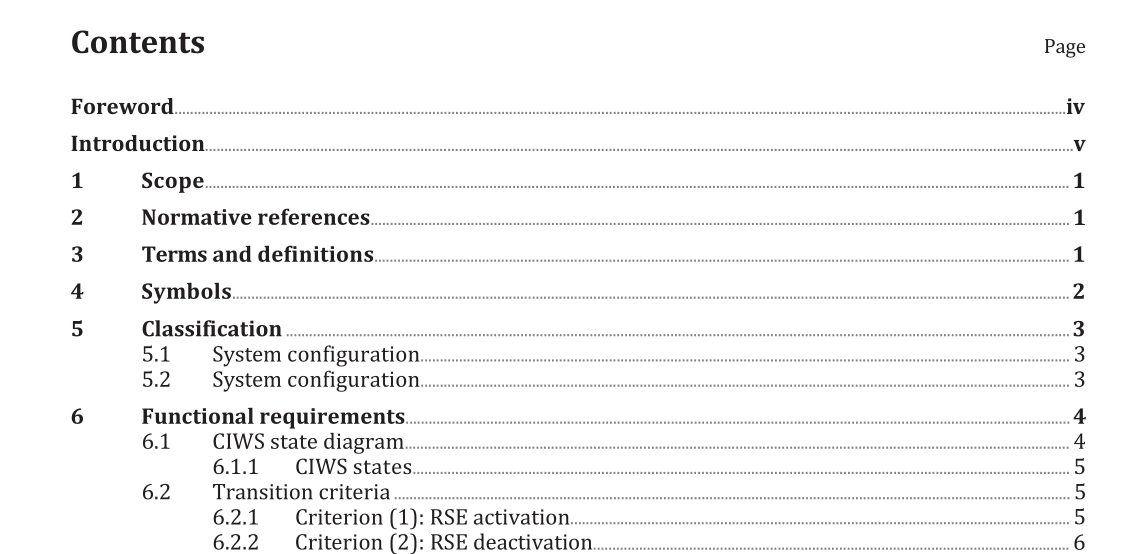BS ISO 26684:2015 pdf download.Intelligent transport systems (ITS) — Cooperative intersection signal information and violation warning systems (CIWS) — Performance requirements and test procedures
1 Scope
This International Standard specifies the concept of operation, system requirements, and test methods for cooperative intersection signal information and violation warning systems (CIWS) at signalized intersections. CIWS are intended to reduce the likelihood of crash injury, damage, and fatality by enhancing the capability of drivers to avoid crash situations at signalized intersections. The scope of CIWS standardization includes basic functions, functional requirements, performance requirements, information contents, and test methods. The characteristics of the technologies used to communicate between the signal controller and the vehicles are not addressed by this International Standard nor are the behavioural responses by drivers, the various capabilities of vehicles on the road, or the multitude of combinations of these two characteristics.
2 Normative references
There are no normative references cited in this document.
3 Terms and definitions
For the purposes of this document, the following terms and definitions apply.
3.1 stopping distance
distance, X v,
travelled by a vehicle with the speed of v, from the time the driver receives CIWS warning until the vehicle comes to a complete stop
Note 1 to entry: This includes the distance travelled during the driver perception and reaction time.
3.5 stop line
pavement marking line extending across approach lanes to indicate the point at which a stop is intended or required to be made
3.6 road side equipment
RSE
roadside device that can supply traffic signal information to the approaching subject vehicle and may also support determination of vehicle position and heading
3.7 onboard equipment
OBE
in-vehicle equipment that can provide drivers with information and/or warnings based on the information received from the RSE and the vehicle
3.8 spot communication media
wireless communication system between roadside and vehicles that operates only within such a small zone that the availability of the communication link can serve as a definitive indicator of the vehicle’s location in support of the intended application
5.2 System configuration
In order to reduce the likelihood of crash injury, damage, and fatality by enhancing the capability of drivers to avoid crash situations at signalized intersections, the CIWS application shall be classified as three types as shown in Table 1. Class I systems are intended to give information about the current phase of the traffic signal for enhancing the driver’s awareness of the signal state. Class II systems are intended to provide an in-vehicle warning to the driver of an imminent traffic signal violation for enhancing the opportunity for the driver to avoid the signal violation. Class III systems address future issues; they are intended to include the function of automatic brake control to reduce red light violations by inattentive drivers.
6.5 CIWS system performance
6.5.1 System capabilities
The OBE in the CIWS will use information transmitted from the RSE to determine if a warning or information should be given. The transmitted information should include traffic signal status and/or timing and traffic signal stopping location or distance information. The RSE will broadcast a periodic wireless message that identifies the traffic signal and its exact location. The message will indicate the current phase of the signal and the travel direction corresponding to that information. The message could also indicate the next phase for the traffic signal, as well as the time until that phase change.
BS ISO 26684:2015 pdf download
